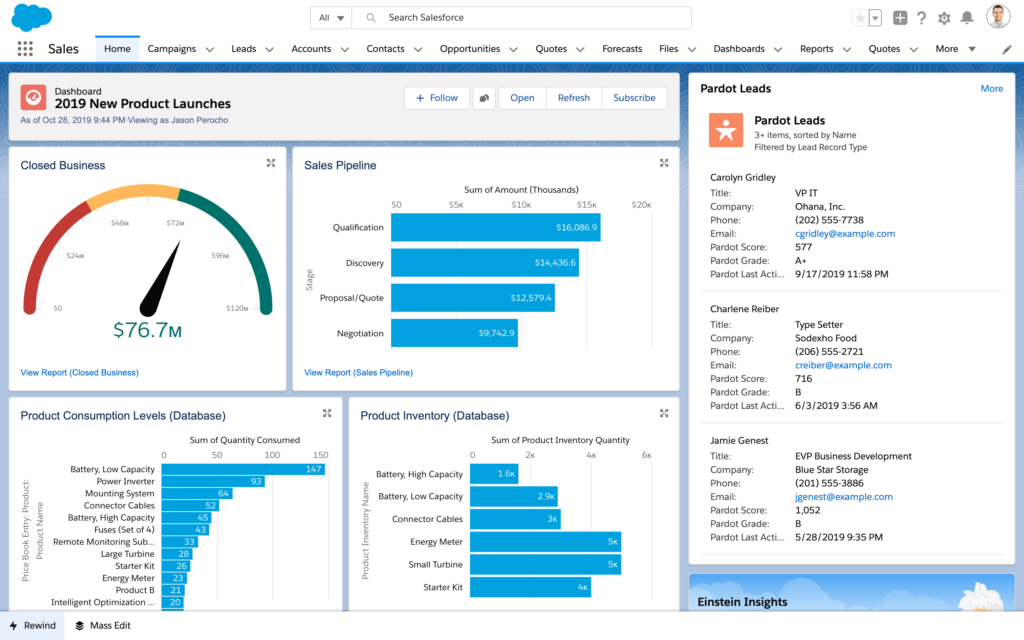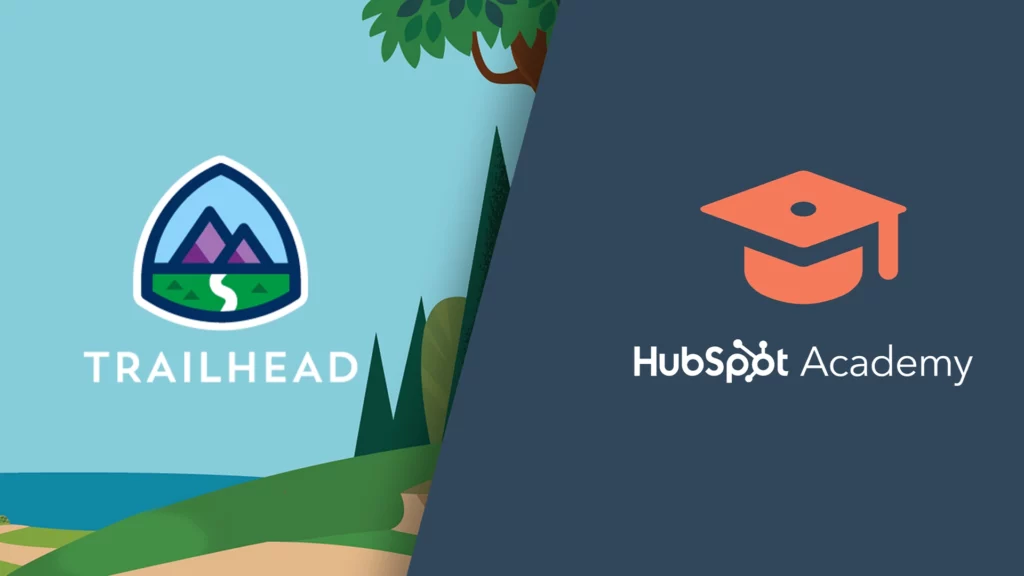Finding the right CRM for your business has become challenging. The current market is flooded with 1600+ CRM software, each one slightly different from others, tailor-made for their core audience. In this crowded market, Salesforce remained the #1 CRM Software for 10 consecutive years with 33% of the CRM market share in 2023. But there is one other CRM software making waves of its own, HubSpot CRM.
HubSpot CRM, with around 5% market share, competes with the likes of Microsoft Dynamics 365 and Oracle when it comes to market size. But this comparatively newer CRM software aims to battle head-to-head with the CRM giant, offering features that might tempt the Salesforce loyalist. HubSpot deserves to be in the spotlight with a 35.9% average year-on-year increase since the pandemic.
HubSpot is regarded to be very intuitive for both small and large business models. Salesforce comes out as a true industry leader, allowing very large-scale businesses to customize the CRM with a high degree of complexity suited for their business. Here, we compare the two popular CRM software of 2023 – Salesforce and HubSpot – to help you decide which one is best suited for your business.
At a Glance
Salesforce is known as sales automation software, while HubSpot is best known as an inbound marketing tool, but they both offer similar sets of features:
- An advanced cloud CRM software, with tools for Sales, Service, and marketing teams to manage their customers.
- Sales analytics for the historical sales data, and forecasting based on it. Presented in the dashboards.
- Customer service features, to automate ticket generation and assignment based on the category and complexity of the issue.
- Contact scoring based on their purchase history and engagement to help the Sales Reps decide where to invest their time.
- Marketing Features to help plan and manage the campaigns, to boost sales by identifying the customer behavior.
- Official learning materials for both the CRMs are available free of cost, with dedicated certifications.
- Advanced level customization using their in-house developed language. Salesforce uses Apex & Lightning Components. HubSpot uses HubL Modules.
Ease of Use
Salesforce is an advanced-level CRM software, that has grown significantly in its more than two decades of existence. With a steep learning curve, Salesforce is a one-stop solution for all businesses. Customizing the Salesforce CRM is a task for a certified expert, often needing dedicated resources. Perfectly suited for huge conglomerates, looking for CRM software fine-tuned for their specific business. Basic CRM software is provided with every license purchased, which could be put into use by small businesses without any customization.
Salesforce UI is simple with preinstalled apps for their basic services like Sales, Service, Marketing, etc. Users can create or install custom apps in their copy of the cloud license. And each app can be customized differently, based on different sets of users. To help customers with the complexity of the platform, Salesforce has a huge community of Trailblazers and Salesforce Partners. These Salesforce Partners are ready to help create you a CRM, to serve your unique needs.

The HubSpot CRM has a more user-friendly interface, in comparison. With the help of onboarding processes and walkthroughs, customers can find it easy to understand and navigate around the HubSpot CRM. The UI helps simplify the management of customer relations, presenting information in a clear and organized manner. Tutorial videos being available on their YouTube channel and HubSpot Academy make it easier for customers to customize the software.
HubSpot offers simple drag-and-drop functionality to customize their software, which eliminates the need for intricate coding knowledge. Through a range of flexible tools, users can adjust workflows, data fields, and reports to align with their specific business requirements.

Features
HubSpot CRM comes close to competing neck-to-neck with Salesforce CRM in terms of the features offered. With advanced features like Workflow Automation, Sales Forecasting, Reporting, and the beta version of ChatSpot AI, Hubspot aims to steal the market share of the CRM giant. Below is an overview of the differences between the two CRMs.
| FEATURE CATEGORY | SALESFORCE CRM | HUBSPOT CRM |
|---|---|---|
| Scalability | Suitable for businesses of all sizes and industries | Geared toward small to mid-sized businesses |
| Customization | Extensive customization using Apex, VisualForce, and Lightning Components | Customizable with simpler, user-friendly tools. Custom Modules can be created using HubL |
| App Support | More than 7000 Apps are available at Salesforce AppExchange | Around 1000 apps are available at HubSpot App Marketplace |
| Reporting & Analytics | Robust reporting, dashboards, and analytics tools | Basic reporting and analytics capabilities |
| Automation & Workflows | Powerful automation of every process using Flow | Workflow automation for sales and marketing |
| Integration | Integrates with a wide array of third-party apps | Can be Integrated in the Salesforce CRM |
| Lead Management | Comprehensive lead tracking and management tools | Emphasis on lead management and tracking |
| User-Friendly | A steeper learning curve, suited for more technical users | Intuitive interface suitable for less tech-savvy users |
| AI Capabilities | Einstein GPT is the most advanced Generative AI for CRM | ChatSpot AI by HubSpot is still in Beta |
| Support & Resources | Extensive customer support and educational resources with strong Trailblazer Community | Strong support and resources for users |
Salesforce excels in scalability, offering extensive customizations and advanced reporting tools, making it ideal for enterprises. HubSpot, on the other hand, stands out with its user-friendly interface, making it easy for small businesses to incorporate CRM into their business. While Salesforce provides a broader range of capabilities and integration options, HubSpot focuses on simplifying customer interactions and nurturing leads throughout the sales cycle. The choice between the two hinges on the specific goals, resources, and technical proficiencies of each business.
Learning Challenges
CRM software requires some learning to get used to it. To help customers with that, CRM Software providers usually have a huge library of courses and tutorials, demonstrating each feature and functionality in detail. Salesforce has the Trailhead program for that purpose, while HubSpot has the HubSpot Academy. Both platform offers certifications for multiple aspects of their software.

With Trailhead, Salesforce has gamified its approach allowing Trailblazers (learners) to earn points and badges on completing each tutorial. This motivates users with hands-on experience to learn and master Salesforce CRM functionalities, available free of cost. Trailhead’s self-paced learning approach allows customers to apply that knowledge to their own projects. Salesforce offers 10 certifications, each specific to its own niche. Allowing learners to select a niche and grow their career in it.
HubSpot Academy is a free online learning portal provided by HubSpot to learn their CRM software. Follows a similar approach with its wealth of educational content, including guides, video tutorials, and knowledge-based articles. Tutorials for Inbound Marketing, Sales, and customer service can greatly enhance user’s understanding of the platform’s functionality. With 19 available certifications, learners can have a narrowed-down expertise in HubSpot CRM.
Pricing
Salesforce aims to target corporate giants with their pricing catered specifically for them with packages like Sale Cloud, Service Cloud, Marketing Cloud, etc. Prices for the packages start at $25 per month for a single user going up to the astronomical figure of $17,000 per month. There is no free plan available, although Salesforce does offer free 30-day trials for almost all of its plans. There is also a free Developer Edition copy of their CRM, where Trailblazers can practice their learnings.
HubSpot licenses are focused on small to medium-scale businesses, with pricing starting at $18 per month and going up to $1781 per month. Hubspot offers a free plan with basic CRM tools included. HubSpot also offers a 14-day trial, though it is only available for the CMS Professional plan.
| LICENSE | SALESFORCE | HUBSPOT |
|---|---|---|
| Trial | 30 Days | 14 Days |
| Free Tools | – | $0 |
| Starter | $25 | $18 – $25 |
| Professional | $80 – $105 | $360 – $1781 |
| Enterprise | $165 – $190 | – |
| Unlimited | $330 – $350 | – |
| Corporate | $4200 – $17,500 | – |
| Billing | Annually | Monthly/Annually |
With Salesforce, you have the option only for the Annual Billing. But with HubSpot, there is an option for monthly billing and annual billing. HubSpot allows you to save a few bucks if you choose Annually Billing over the Monthly Billing. With Create a Bundle, HubSpot allows you to easily create a custom plan for your business. Compared to Salesforce, where you are required to contact Salesforce Support for the same.
Salesforce plans are also much more complex compared to what HubSpot offers, often making it difficult to choose the right plan. Salesforce partners like Growbiz Solutions can help you understand and choose the perfect license plan for you. In the end, it all comes down to what price are you willing to pay for the features that you want.
Both platforms offer unique advantages that cater to diverse business needs. HubSpot’s CRM shines with its user-friendly interface, simplifying adoption for startups and small businesses seeking to streamline their processes. In contrast, Salesforce boasts a robust suite of features that suit enterprises requiring advanced customization and scalability. While HubSpot’s ease of use provides a seamless entry point, Salesforce empowers larger businesses with intricate functionalities.
The learning curve associated with each platform varies, with HubSpot offering quicker familiarity and Salesforce demanding a more comprehensive grasp due to its intricate offerings. Ultimately, the decision between these two industry giants boils down to the unique needs and growth trajectory of each business, ensuring an informed choice that optimally elevates customer relationship management strategies.



